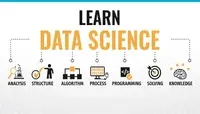If you don’t know by now, data is empowering businesses, including the amazing technological innovations that we see around us every day.
As the world becomes more digital, and organizations become more technology-driven, business and technology teams need to work together to create new products and services.
This is where a business analyst steps in to make those exciting innovations happen.
Business analysts bridge the gap by working closely with business and technology teams to improve the quality of products and services being delivered.
- Business analysts use data and analytics and modern technologies (get a FREE Tableau, Power BI or Excel course) to improve processes
- They also deliver data-driven solutions.
- They ensure customers goals are correctly interpreted and translated into application.
- They ensure the client's needs are converted into the final project.
Business Analyst Skills
- Programming languages, such as SQL
- Business intelligence skills to deliver data-driven solutions
- Communication
- Problem-solving
- Knowledge of the business structure
How Business Analysts Do Their Job
- Project planning: Coordinate with executives and management to get the right information about the project.
- Understand the business objective: Learning about the business objectives, problems, and requirements and discovering the best solution to meet business goals.
- Gather Requirements: Getting requirements from executives to make sure they are on the same page about the project and its goals, and creating deadlines for project completion.
- Allocate Resources: Understanding project budget, assigning tasks to developers, finalizing tools and software needed for the project.
- Provide Suggestions: Tracks work progress, continuously monitors the project, and provides suggestions and feedback.
- Collect Feedback: Collects feedback about how the product or service operates from a user perspective.
- Build Reports: Builds reports using visualization tools like Tableau, PowerBI or Microsoft Excel to explore product or service performance and gain valuable information.
- Conduct Meetings: Schedule meetings regularly to discuss necessary changes or solve any issues.
- Documentation and Presentation: Upon project completion, everything is reported, documented, and presented to executives, stakeholders, and clients including maintenance reports. These documents can be used to help improve future projects.
If you want to be a part of an exciting and relevant career, then choosing to be a business analyst is a great opportunity to work in many different industries including energy, finance, insurance, government, healthcare, business and much more.
To start your career as a business analyst today, watch these FREE business analyst courses on Intelligent World and subscribe to this newsletter!






